The more I thought about it, the more I realized I needed to put this experience into words.
DAY 1, Goodbye, Again, Friend
I started my journey across Japan’s northern alps in the remote village of Kamikochi. Kamikochi wasn’t accessible by private car: being one of Japan’s national heritage sites, it remains decently preserved. The only way to reach the entrance was by a hired car (taxi) or bus.
I just so happened to be with a friend I had met in the Philippines months back. As things go, we were in the same place at the same time, making it too easy not to reconnect and explore this peculiar land together. Moreover, he was traveling Japan in style…with a minivan. I met him at Tokyo’s airport where we picked up the van. We named it Serena…because why not? After nearly a week of sleeping on foam mats in the back of Serena, driving on forgotten country roads to avoid outrageous tolls, and exploring the hard-to-reach areas throughout central Japan, our time to part ways again was close. The world seemed to be getting smaller and smaller, and I was positive that our paths would eventually cross again.


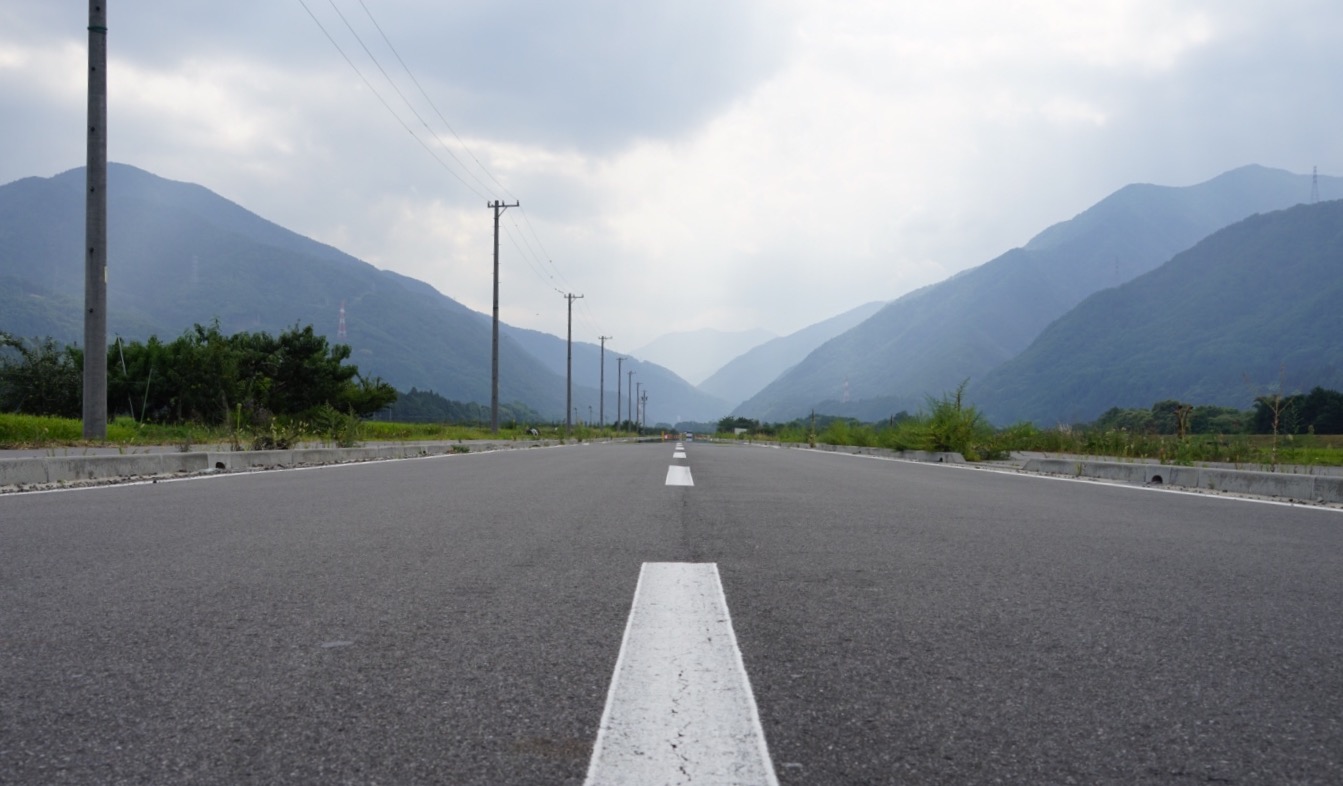

With the short shuttle bus ride from the parking terminal to the entrance out of the way, we were officially in Kamikochi, and with plenty of daylight to spare too. Segev headed for the campsite, while I remained at the information center, preparing for what I thought would be an easy few days of hiking. The plan was for Seg and I to part ways as soon as his tent was set up. I would then begin my journey north to the village of Omachi, easily a one week’s journey away.
Packable food options were limited, leaving me with no choice but to load up on fresh, perishable, food: food that probably wouldn’t last the day. I grabbed what I could fit in my already cumbersome and bulging pack and made my way toward the campsite in search of Seg.

To celebrate our parting, Seg brought out the last bit of his Israeli coffee he had left with him. It was coffee found only in Israel, and he managed to bring enough to last his entire nine-month journey across Asia. After downing two cups of Israel’s finest mud coffee, I threw my pack over my shoulder and bid farewell to yet another friend I had made on my journey across the world. The weather was nearly perfect, and I had beams of sunlight shining through the forest’s canopy to lead my way. The first five kilometers went by just as I had expected, moderately steep elevation through a vibrant forest. I kept a strong and steady pace through the woods; I was hoping to reach my first campsite before dusk. Back at the trailhead, I had mapped out my first day to be around 16 kilometers with a roughly 2,000-meter climb. An easy day, I had ignorantly thought to myself.

By the time I reached treeline, the weather had already begun to shift. Ominous clouds pushed across the sky, settling in over the range, consuming everything in their path. Not exactly what you want to see when you plan to spend over a week in the mountains. It wasn’t long before everything in front of me was completely engulfed. I figured it was only a matter of time until there was no blue left to be seen. I had seen this happen a thousand times, and what laid in front of me painted a grim story for the next few days. And although weather in the Alps is unpredictable and ever-changing, a typhoon was heading for Japan, almost guaranteeing abysmal weather.
I pressed on, arriving at my first checkpoint by the late afternoon. It was a small mountain lodge, but they had running water and food for sale. It was also an official tent site with dozens of tents already set up. I refilled my water stores and restocked my pack with any food they had available. I hadn’t hiked far but the elevation was no small feat. From the trailhead, I had already gained about 1,200 vertical meters. I was feeling fairly decent but knew that the next bit of trail would be twice as laborious. Looking out at the terrain, I could see rock-bedded trails, disappearing up and into the fog. I remember thinking to myself how hard it was going to be, but that I’d be relaxing at the campsite with my feet up before sunset.
The day grew shorter and shorter as I reached my first peak, Nihiho-doppyo Dake where there were already a few hikers moving about. I joined the small crew in taking the glorious “summit photos.”

At the summit, I met a small group of Japanese people who spoke English well. Hoping for some camaraderie, I asked if they were heading for Okuhotaka Dake, the range’s highest peak and Japan’s third tallest mountain, too. They laughed and said no way. That’s too hard. I was a bit confused, it wasn’t that much higher from where we stood and it was less than five kilometers of trail away. Why come all this way, I couldn’t help but think.
I was ahead of schedule, affording me a generous break. I wanted enough energy to take on the next twelve peaks between me and my campsite without any issues. I remained overly-confident, but could feel my left knee starting to ache. It could have been from the initial and steep ascent or the chilling air that rushed up over the ridgeline: most likely a combination of both. My knee had been acting up more and more over the past few years, but I was hoping more than anything that it would just remain an ache and go away. Although I tried my best to ignore it, I knew that the small ache was a precursor to something bigger, and that if I wasn’t careful, I could end up in a lot of trouble.
I set my mind straight and threw my pack over my shoulders. I was roughly 850 meters from my next summit, with a 235-meter vertical gain. I thought nothing of the difficulty and continued at a strong pace. I was eager to get to my campsite and call it a day. Other than the increasingly alarming ache in my knee, there was something else that struck me as off. I hadn’t seen another hiker since I left my first peak. It wasn’t terribly late or anything, and it was dead smack in the middle of Japan’s most popular vacation season. One thing I came to find about the Japanese is that they are very active and frequent their own trails quite a bit. Up to this point, the majority of hikers I met while hiking in Japan were Japanese. I liked that about this country. These trails should’ve been crawling with people based on how busy the first lodge was. The thought passed, and I continued traversing the rocky ridge.
By peak three, it finally dawned on me as to why nobody else was on the trail: for one, fog had completely consumed it; for two; it was incredibly dangerous and arduous; and, for three, the altitude made the air hard to breathe. I could feel myself wearing down by the minute. With the six liters of water I had strapped in, my pack weighed over 27 kilograms (60lbs), and my left knee was all but finished. I was in good spirits but was nearing total exhaustion. The trail tested me mentally and physically and challenged my every step. The jagged and rocky trail was like a never-ending nightmare. It led you up 100 vertical and demanding meters before dropping you the same 100 time and time again. Hovering around 3,000 meters (10,000 ft) above sea, the altitude began eroding my spirits.


It had been hours since my last encounter with the group from summit one. Doubt filled my head as to whether or not this trail was actually open or safe. But, then, out of the fog and heading my direction, appeared a small group of hikers, maybe two or three total. I was relieved at the sight, but they were taken aback.
Curious, and speaking for the group, the middle-aged woman asked why I was heading in my current direction and so late in the day, at that. I casually told her that I was in route to the Yarigatake campsite and expected to be there before dark. They were Japanese, and when I mentioned Yari, they all wore a succinct look of confusion.
Looking down at her watch, she looked back at me and said, “Yarigatake is 20 hours by trail from here. There is no way you’ll make it there by tonight. You’d be lucky even to make it to the next campsite by dark.”
I looked at her and with a small grin said, “I’m a pretty fast hiker; I can make it.”
Based on the distance I needed to go and how fast I was moving, the math worked out.
Confident Idiot, she must’ve thought. But, in the polite fashion of Japanese people, she simply shrugged her shoulders and wished me luck. The other two followed, giving a respectful half bow. It was apparent that they didn’t speak English. I imagine they laughed too when she told them I was looking to make it to Yarigatake before dark.
I began to question my plan. Either she knew something I didn’t, or she and her group were slow hikers. After all, Yarigatake’s campsite was only 8.5 kilometers from my current position. I figured it would take me no more than three hours to reach.
I pushed on, but more and more doubt filled my head with each step forward. I wasn’t worried about hiking in the night, but these trails were steep and often precarious. It wouldn’t be a great idea to chance.
After hearing the concern in her voice and seeing the absolute difficulty of the trail, I began to wonder if I would even make it to my 7th peak, the tallest in the range, let alone my campsite by sunset. It was the first time in a long time that my ability came into question. It felt like I was making great time and chipping away at this trail, but the reality was, it was chipping away at me.

By my 5th peak, I was ready to call it quits. My left knee was completely shot and my heart was pounding through my chest. The back-to-back 100-meter climbs had officially taken their toll. I sat on the 5th summit wondering what my next move was, if anything. There was no doubt that Yari’s campsite was out of the question. Looking down at my map, even reaching Okuhotaka Dake’s campsite was questionable.
It was only a matter of time before the sun fell behind the mountains, eliminating the little light I had left. I had been hiking through the fog for over four hours and hadn’t seen a man-made structure since leaving the first lodge. My breath was heavy and the temperature was slowly dropping.
After an internal struggle, I decided it would be best to set up camp for the evening. There was no way I was going to reach the next official campsite, not with Okuhotaka Dake in the way and definitely not in the dark with how exhausted I felt.
I began my descent down the 5th peak, surveying the rocks for a relatively flat area. At the gully, I found a flat rock ledge: it was almost too perfect. And while I couldn’t see beyond it, I threw down my pack and began setting up camp. In the nick of time, too. Rain was quick to follow.
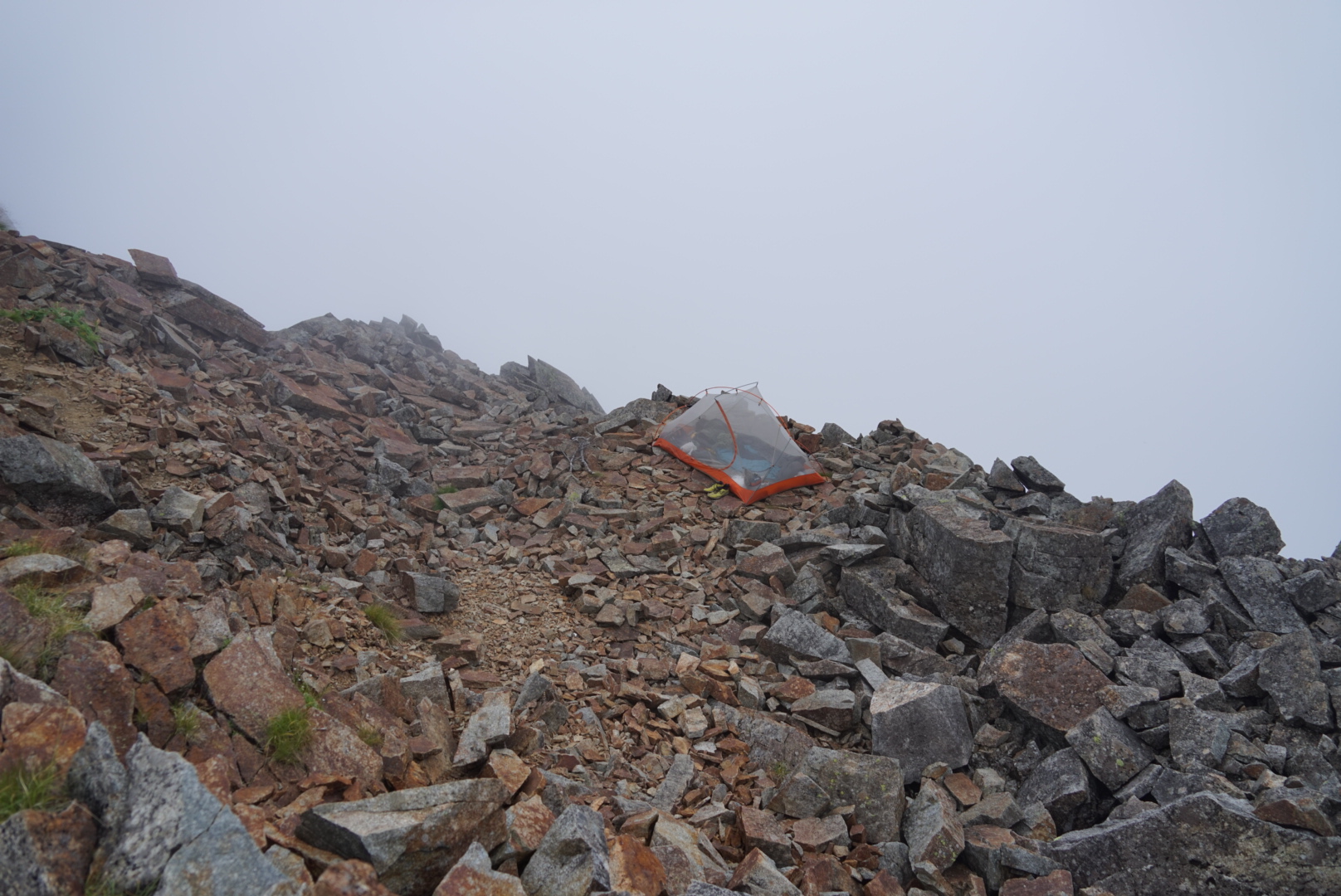
DAY 2, A New Friend
It was just before six o’clock in the morning. I wasn’t completely sure, but I thought I could make out the shape of a person, scrambling down the rock trail and in my direction. I was camping where I wasn’t supposed to, and although I was pretty far far from the actual path, I didn’t want to chance being fined 100,000 yen.
I began packing up my tent immediately. As he approached, I gathered the rest of my supplies and kicked back on a large rock, as to appear composed and like I hadn’t just spent the night. As he passed, he stopped and looked at me with great surprise. The feeling was mutual.
The best he could, he asked if I had just camped there. I looked at him and said, “No way, man! I’m just taking a break.” I wasn’t sure if I could trust telling him the truth. It was odd to see somebody this early in the morning, especially considering that I was in the middle of a mountain range and hadn’t seen a soul on this trail heading north since I started. I thought maybe he worked for the lodge and was just doing a trail sweep.
His name was Youto, and his English was anything but abundant. He could understand me perfectly well but speaking it back was a bit of a struggle. I gave him a half bow, shouldered my pack, and set out on the trail in front of him, thinking that I would never see him again.
He remained on my tail, keeping my pace with ease. I thought to myself it probably wouldn’t last. I was the fastest hiker I knew at the time. Not because I had something to prove, I just hiked a lot. An hour later and a lot of distance between me and where I made camp, I noticed that Youto wasn’t fading, not even in the least. In fact, he was keeping a strong enough pace to pass me, so I let him do just that.




We exchanged the lead several times, but always kept a steady pace even traversing the range’s piercing spine. The fog limited our visibility, and I often felt like we were going in circles. As we inched on, small sections of the trail became visible to us and the trail behind slowly disappeared back into the fog. Okuhotaka Dake sat only a few kilometers in front of us, yet we couldn’t see it. We could barely see each other.



I had intended on reaching Yarigatake by the evening, but settled on making camp at Okuhotaka’s campsite, where Youto was heading, instead. From where we had initially started, the campsite was less than two kilometers away, but it was two kilometers over loose, steep, and jagged rocks. Every 150 horizontal meters took as long as 1 kilometer. We climbed for hours up and down the rocks, using only chains and protruding boulders as secure holds. The possibility of falling was very real, but just as thrilling. Judging my Youto’s climbing helmet, he wasn’t taking any chances. There were no safety guidelines or restrictions. It was you and the trail at your own risk (I later came to find that many people die on this range and that you need to submit forms in advance to hike the Alps…whoops!).
After a long and grueling morning, we reached the summit of Okuhotaka together. There wasn’t much time for embellishing our feat, though, the weather was slipping deeper and deeper into a dismal state. The summit was cold, windy, and covered in a thick fog. Within seconds of taking my camera out, the lens and body were coated in a thin layer of moisture.
There were a few other Japanese fellows occupying the summit by the time we got there. They had hiked up from the campsite, the campsite we so looked forward to reaching. It sat just over the ridge on the saddle. Their English was above par, and they had even visited Philadelphia, my home city.

After a brief stay and a few summit pictures, Youto and I set off for the campsite. We made it to the lodge in no time, as it was all downhill and not nearly as rigid as it was on the way up. The mist lingered on and was so thick that it was like walking through sheets water. I was never so happy to see a man made structure before. The lodge was warm and cozy with a gas stove in the middle of the room. We were wet and cold and would’ve traded our last dollar to get inside. Luckily, we didn’t have to.

Compared to where we just came from, the place was crawling with hikers. As the afternoon went on, dripping wet hikers filed into the lodge one by one, all coming from different directions of the trail, but none from where Youto and I came from. The short section of trail we had traversed was some of the most dangerous terrain in the entire range; the other dangerous section laid just beyond our campsite.
We took shelter inside the lodge until the heaviest part of the storm passed. At the first opportunity, we ran out to set up our tents. The campsite was astounding, carved out of Karasawa zan, another gargantuan mountain adjacent from Okuhotaka zan. Youto and I set up camp on the two highest rock platforms that overlooked the valley. We didn’t know it at the time, but our view was unbeatable. The rain continued to pour, leaving us with little to do with the rest of our day and no view.
Exhausted, Youto retired to his tent and remained there for the better part of the day. I stayed in the lodge, drying my clothes and pack next to the stove. Among a sea of Japanese, I was the only foreigner in sight. They came in waves, flooding the common area, leaving their mark of wet footprints and dripping coats. Most weren’t as fortunate as Youto and I; we had made it to the lodge before the worst of the storm hit.

When the rain ceased, I made my way back up to my tent so I could organize my things and lay out my sleeping bag. That’s when I saw it, the entire Alp range!


I hadn’t seen anything for the past two days, so when the clouds finally cleared, time stood still. Without hesitation, I ran back to the lodge to grab my rain jacket and day pack. Karasawa Dake was only a 100-vertical-meter climb away, and I wasn’t sure if I would get the opportunity to see the range again, especially from above 3,000 meters. On my way out of the lodge, I saw Youto running down from the campsite, pointing at the summit. It didn’t take an expert to understand what he meant. I held up my rain jacket and said, “Let’s move!” We were on the same page since the start and shared the same excitement to see the Alps from an incredible vantage point, the summit of Karasawa Dake. We raced up the mountain and, as we ascended, the grim weather pushed further and further away, until it was almost completely out of sight. The view from the summit made every painstaking step worthwhile.
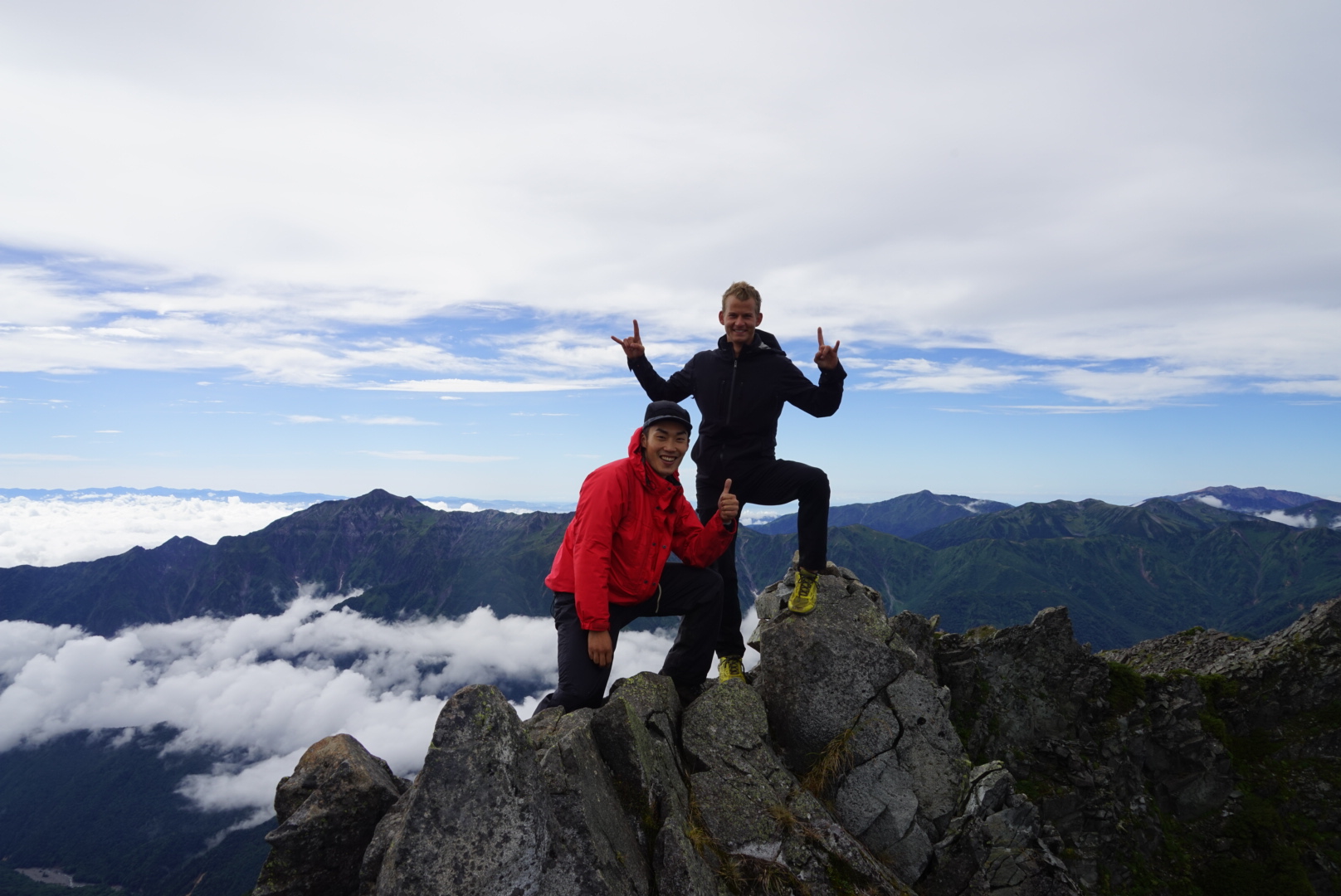
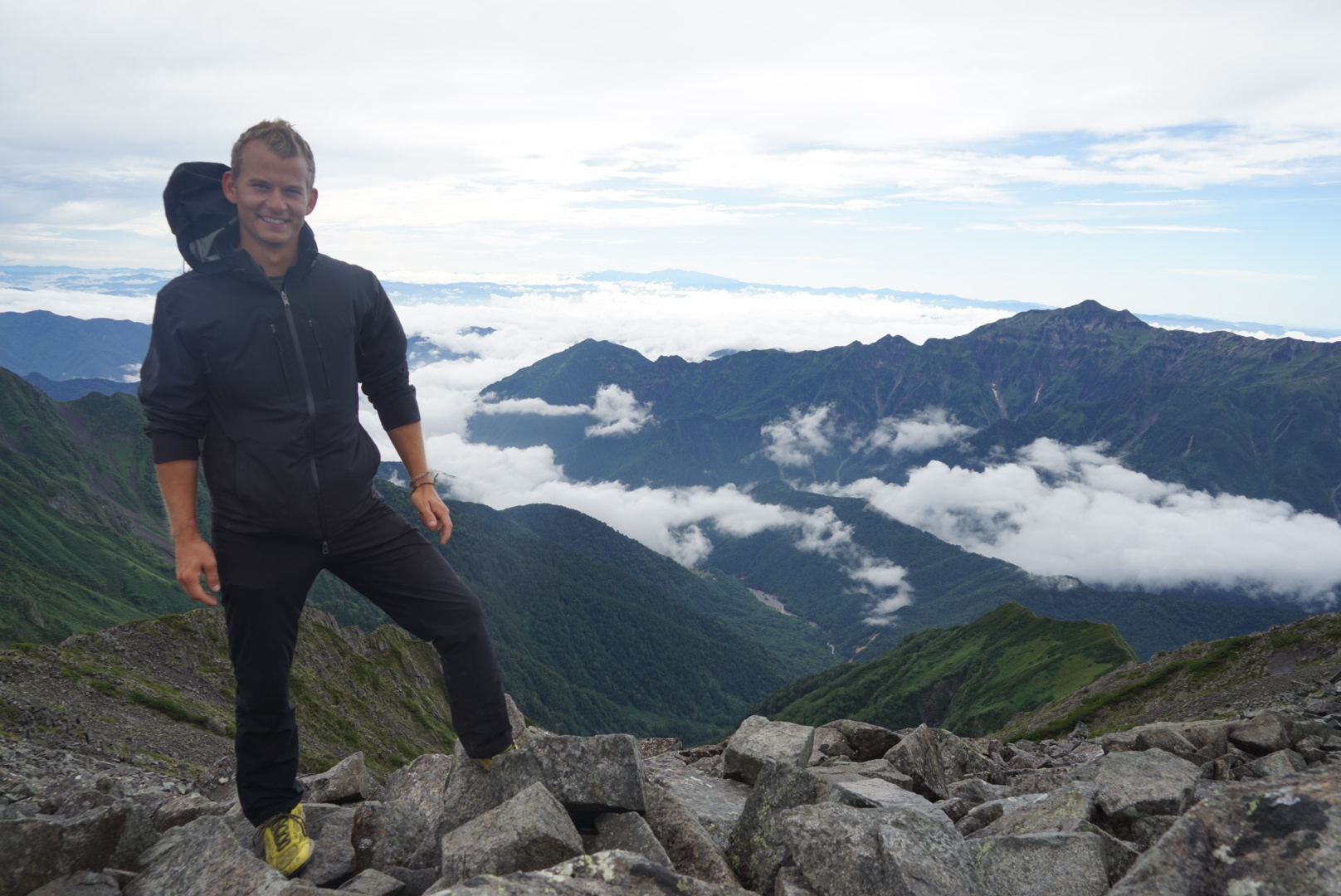
I hadn’t seen a place like it since New Zealand or Chile. We were the first ones to take advantage of the clearing and within the hour could see several other hikers making their way up the mountain’s rigid path. The weather improved by the minute, giving way to more and more of the range. It was like a dark spell had been lifted. The bright blue skies had prevailed. We hung out at the summit for a few hours before descending back to the campsite and warmth of the lodge. Initially, the poor weather made me question my journey, but seeing the weather open up gave me the hope and motivation I needed to press on.
As the afternoon faded and the evening drew closer, the weather began to shift for the worst. I had hoped to return to the summit for sunset, but after stepping back outside, I soon realized that the idea of another summit was a fading possibility. Dark gray clouds returned, eating up the day’s remaining sunlight. I decided it was best to kick back and enjoy a highly marked up bottle whiskey I had purchased earlier from the lodge.
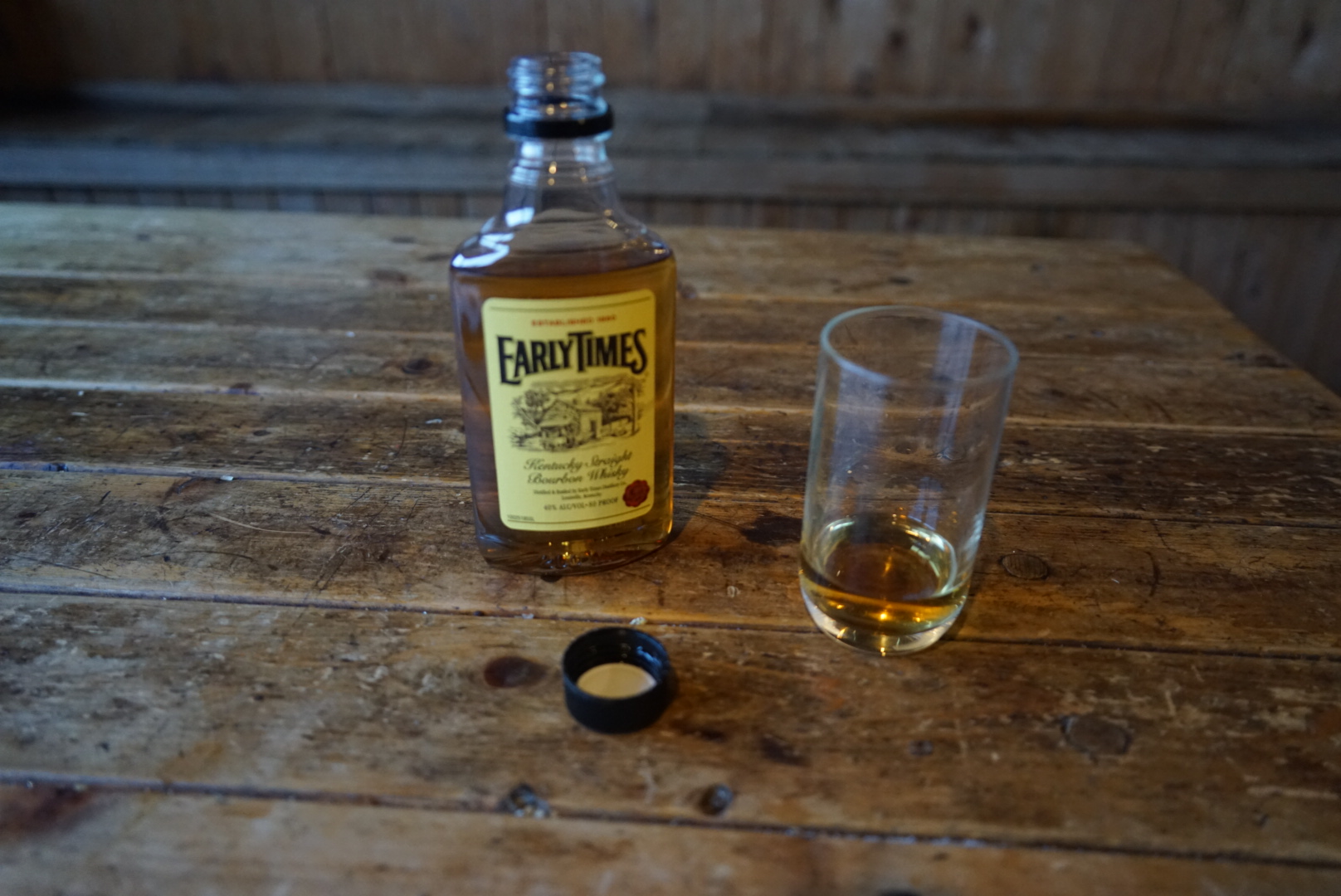
As I sat, enjoying my expensive cheap whiskey, killing the last bit of brain cells the elevation had missed, I turned my head as if to appreciate the color gray one last time. “Son of a bitch,” I whispered from under my breath. The weather had turned again, with pockets of pale blue skies emerging once more.
I ran for the door, turning back to grab the last bit of whiskey I had left on the table. As I made my way out the door, I saw Youto running down from the campsite, heading my way. Just like before, he was pointing at the summit, yelling in Japanese.
We were still on the same page, only this time, I had whiskey in my blood. It didn’t matter because catching the sunset over the North Alps was something I had been looking forward to since the start of my journey. The ascent was a struggle, not because I was slightly intoxicated…okay maybe because of that. It took me longer than usual, but, eventually, I made it and just in the nick of time, too! The sun was perched just above the horizon, ready to fall below the few remaining clouds.
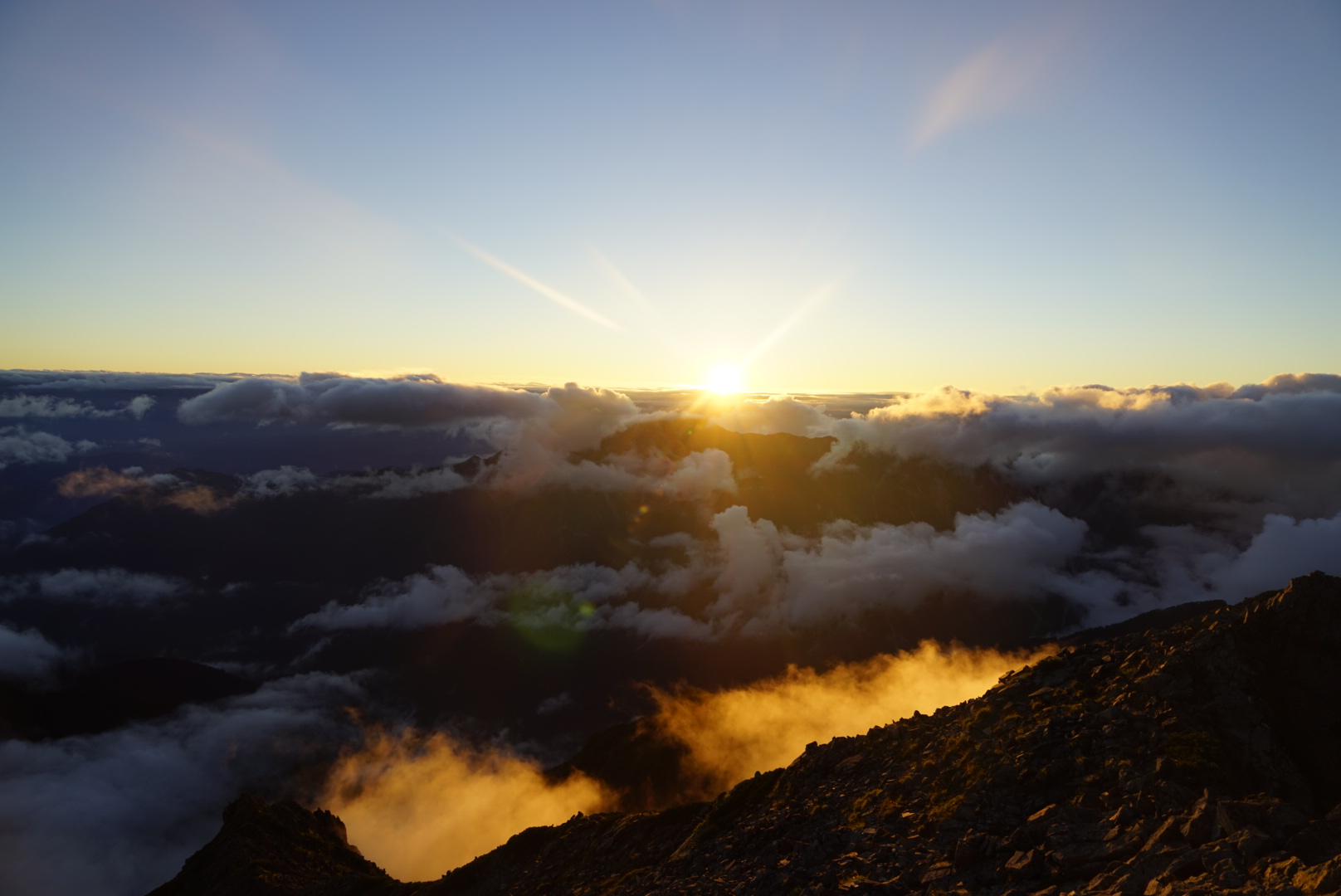
The view was breathtaking: or maybe that was from the altitude. We were both surprised to see only one other person. We kicked back on the summit long after the sun fell beyond the horizon and until the stars began to appear a few hundred at a time. Just as the sun fell, a nearly full moon rose directly from the east, giving off a cold glow on the mountains. I could hear myself saying “wow” over and over again. I was also pretty intoxicated, so, really, anything would’ve “wowed” me.

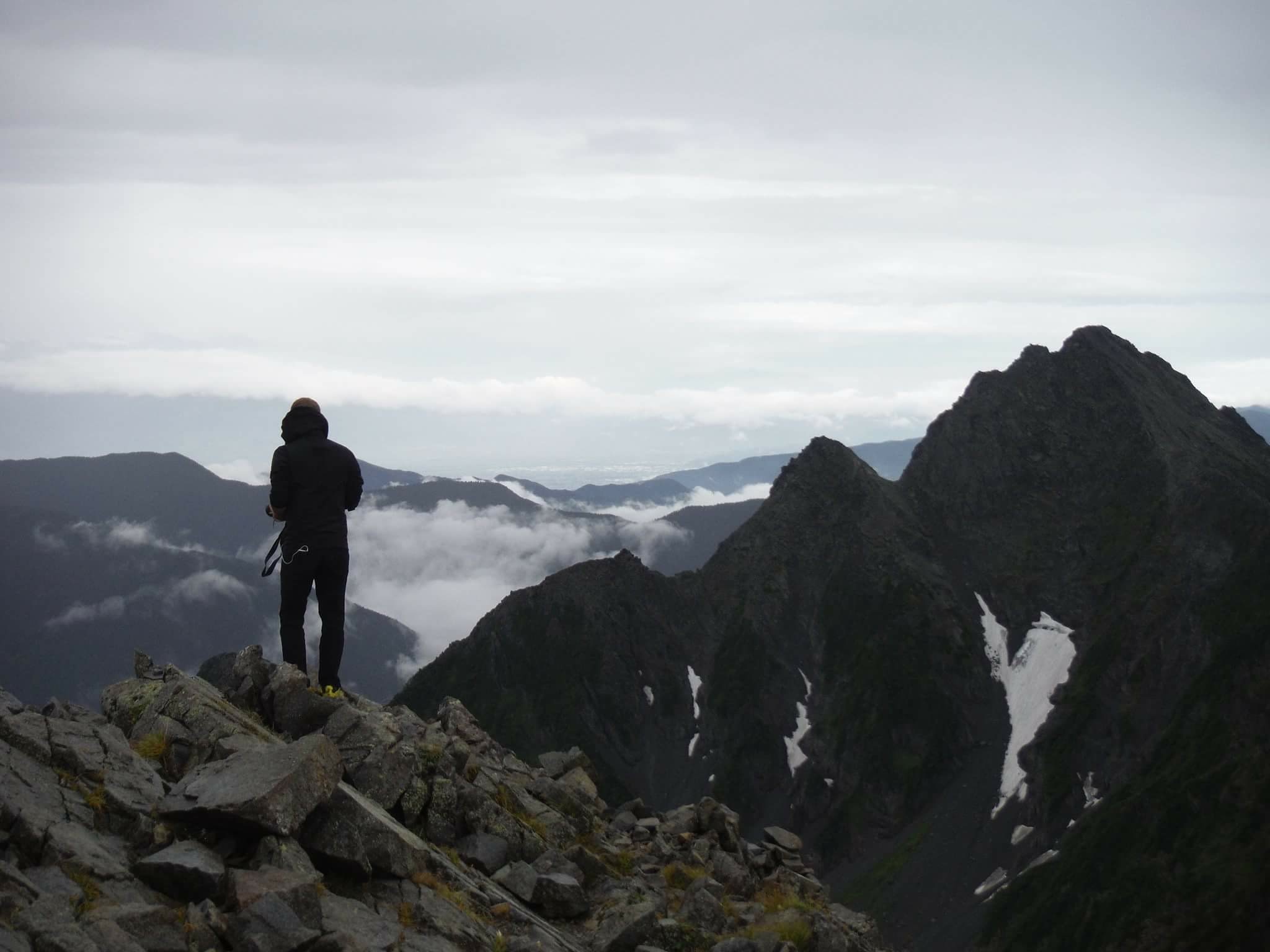





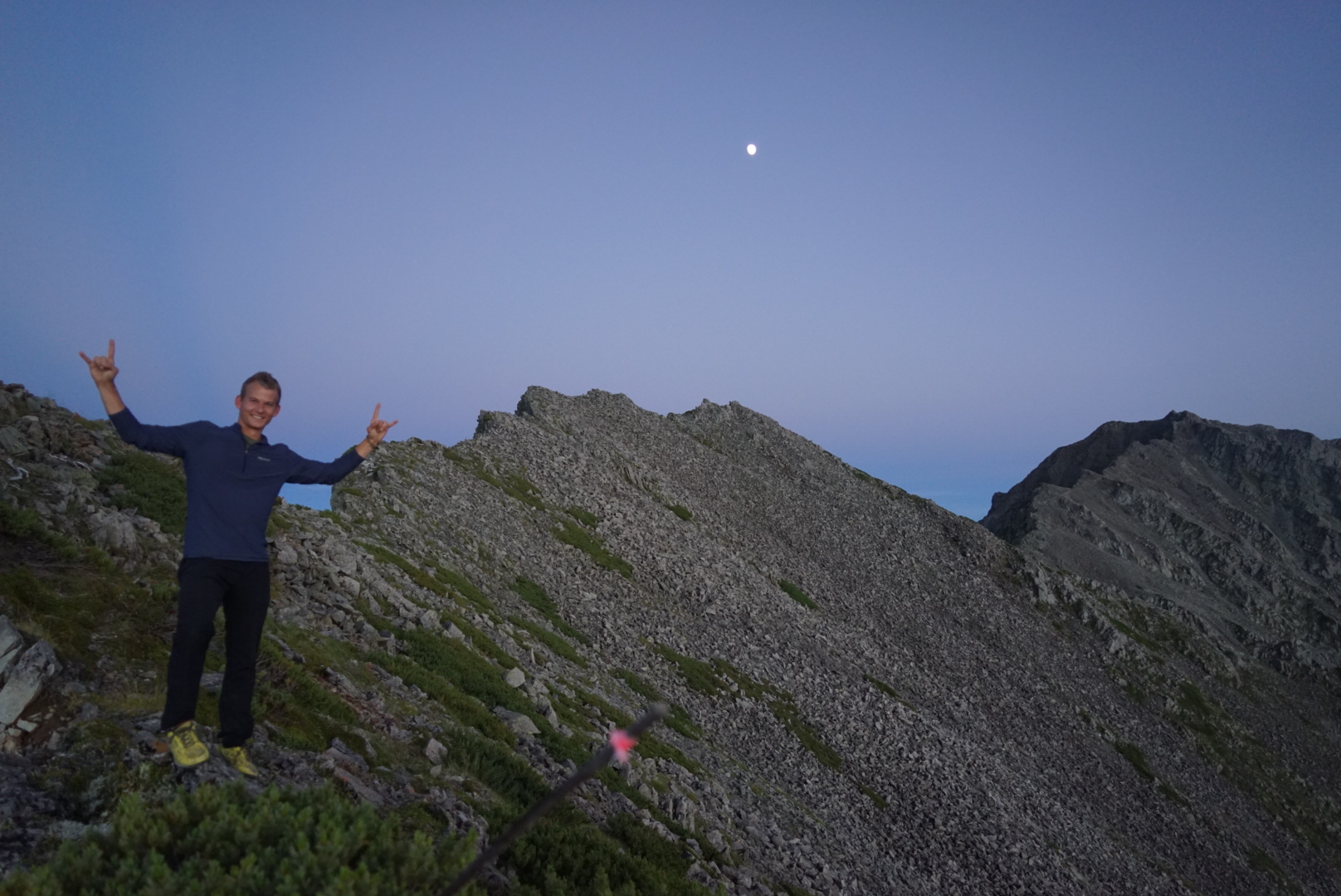

After a few hours and being the only two goons at the summit, we began our descent back down to our tents. It was a day for the books, and we had both seen and accomplished so much. We had only known each other for several hours but had been on the same page since the beginning. It was another bittersweet goodbye, but a goodbye nonetheless. He planned to set off by 04:00, while I didn’t plan on waking up until after 05:00.
DAY 3, Goodbye, Again, Again, New Friend
I wasn’t sure of the time, but I figured it was close to 04:00 because I could hear Youto packing up his tent. I rolled over, falling back asleep for another twenty minutes. I was utterly exhausted. Somewhere and somehow in a dream state, I realized that the sunrise from Karasawa Dake would be something to witness and missing out on it would be a huge mistake. Why come all this way? I repeated in my head.
I slid out of my sleeping bag, scrambling to stuff my pack and get moving. I didn’t have much time if I was going to make it to the summit with my pack before the sun made it to the horizon.
It was only a short climb away, but after summiting Karasawa zan twice already, and taking a full beating over the last two days, I knew it was going to take a lot out of me. My pack weighed heavily on my shoulders, dragging me down as I went up. Eager to catch the sunrise, I wasted no time with the details of organizing my pack. By 05:00 I began my ascent and by 05:15 I had summited Karasawa zan for the third time. There wasn’t a cloud in sight, and I could see for kilometers over the Alps.


I had a long journey in front of me so I started on my way shortly after sunrise, allowing the sun light up my path. Back at the lodge, several hikers told me that the next part of the trail was extremely dangerous and quite steep, and after having been on the trail for over two days, I had no doubts. But with a clearing in the weather, I didn’t care. I was just happy it wasn’t raining and that the sun was shining.
Looking down from Karasawa Dake, I knew I was in for a hell of a day. The path was vertical with dangling chains and ladders bolted into the rock, leading the way. Comforting, I thought. One wrong step or faulty grab, and I would be paint for the rocks.

As I descended the first stretch of trail, I could feel my hands tighten up and begin to cramp. I was a hiker, not a climber, and the amount of weight I was carrying combined with the steepness of the trail was putting a lot of strain on my hands. Not to mention, I was gripping each stone for dear life, probably exerting more effort than I really needed to.
By 07:30, I reached the saddle; it was the lowest and longest part of the trail I would be on all day. The air was thin, leaving me gasping for each breath. Even on the here, I was still around 3,000 meters above sea level.

The saddle was a nice break, but it was only a matter of time before I had to start climbing again. My next peak was Kitahotaka Dake, sitting over 3,100 meters high. Fortunately for me, it wasn’t as steep of a climb as my descent from Karasawa Dake and there were a lot more ledges to use for rest.
I took my time climbing, with the last couple of days having beaten my body down. I had a growing headache, due to the lack of water and sleep, and I’m sure the altitude. The only thing keeping me going was the strength of my legs. The weather was the clearest it had been since the start of my journey and kept me motivated throughout the morning.


The clear weather didn’t last. As soon as I made it over Kitahotaka Dake, I could see hints of a storm moving in from behind. I knew my time was limited and that the rain would soon be here. I pressed on.





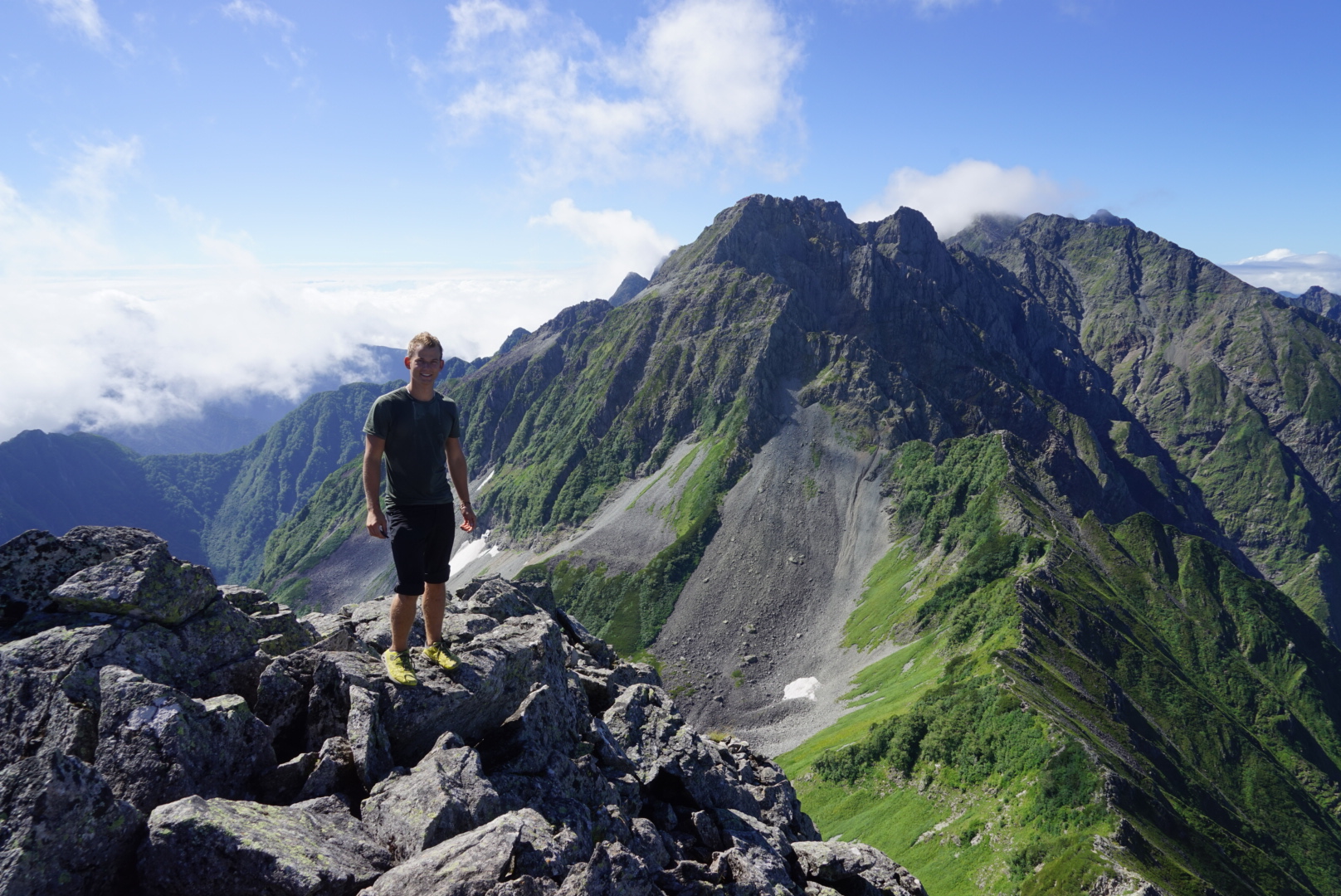

The path was clearly visible, revealing only minor variances in elevation ahead. It was going to be a walk in the woods (figuratively, considering the context) from here.
I made it to camp by noon. I was completely exhausted and as soon as my tent was erected, I crawled in and fell asleep immediately. I didn’t bother with tent registration at the lodge, even though I was sure it would come back to bite me in the ass. I, was so tired that I didn’t care; I would handle it when I woke up.
It must have been at least an hour since I had fallen asleep. Who knows. I woke up to a rapping on my tent. It took me a while to come to, but as I did, I saw a Japanese guy kneeling down at my tent, waving a wooden plank with the number 14 on it. It didn’t take a genius to figure out that I was in his spot. He was kind kind though: kind enough to swap sites with me so I didn’t have to break down my tent and haul my stuff across camp.

I was wide awake. My head was pounding but the idea of “hanging out” wasn’t really a thing I did. From my tent, Yarigatake’s ascension point sat only a few meters in front of me, and although it was covered with a thick haze, I couldn’t help myself. I moseyed closer and closer, repeating to myself that I needed to rest and that climbing Yarigatake was not a good idea.
But it was too late; I had already started to make my way up the mountain. It was a very short but steep climb to the summit. I told myself that I would just take it extremely slow and that if my head began to pound too hard, I would turn back and wait until I was fully rested, which would probably be the next morning.
I knew the words I mumbled to myself were nothing more than empty promises and worries, and I knew I wouldn’t listen. By the time I made it to the summit, my head was on fire. The clouds had settled in over the peak, too, leaving nothing visible. I couldn’t even see two meters in front of me. Truth is, I didn’t care; I just wanted the satisfaction of summiting Japan’s fifth tallest mountain, Yarigatake, after just having submitted its third, Hotaka.
Even so, a view would’ve been nice. I remained on the summit for the next few hours. If the clouds cleared, I wanted a first class ticket to see the Alp range from Yari. But, for hours, the only thing I saw was fast-moving clouds, rushing over the peak. I descended, looking forward to my tent.
That evening, I planned out my next campsite. After fully understanding that I wouldn’t make it to Omachi within the week, I needed a new plan. This trail was beating me down left and right. As long as I could continue restocking my food stores at lodges, I could continue along, taking as long as I needed to reach my final destination.
DAY 4, The Wrong Turn
I woke up to gusting winds and heavy clouds. I knew there would be no getting around the rain. Everything I owned was wet from the days before. Every attempt to dry my clothes failed: the air inside the lodges was far too cold and damp to dry anything. My tent was even worse being even more exposed to the outside climate. I would have to settle with a wet pack for the long stretch of trail I had planned out.
Exhausted, I set off around 09:30. I had to make do without my GPS, as the rain was relentless and my touchscreen couldn’t keep up with the droplets. Even if I tried, my fingers were too wet to navigate the map. Even the small task of sliding my phone open was futile and frustrating. Instead, I was inclined to give my best shot at following the Japanese trail signs.

I knew the general direction that I needed to go, but I was on a network of trails that intertwined from time to time. If I accidentally merged onto the wrong trail, which was a very real possibility with my navigation skills, I would be heading in a different direction altogether, a better way to put it, lost.
As it turns out, I did just that. I knew better. The rapidly dropping elevation when it should’ve been rising was a dead giveaway or at least it should’ve been. I was so focused on my steps and the rain was too heavy to pull out my phone to reaffirm my decision. It wasn’t until I saw a sign for Kamikochi that I knew I had taken a wrong turn.
I was annoyed but made peace with the minor change of plans. I was beyond exhausted and had nothing to prove. Rather than turning around, I decided I would continue down and make camp where I had started my journey, Kamikochi. A few days to regain my strength and make a new plan would do me good, I figured.
It was a long way to Kamikochi, but it was the smoothest bit of trail I had been on for days. It was flat with a slight a downgrade and followed the river the entire way. The terrain was a nice change of pace, and I began to enjoy the subtle trail-walking over the chain-climbing and rock-scrambling that occupied my last few days.

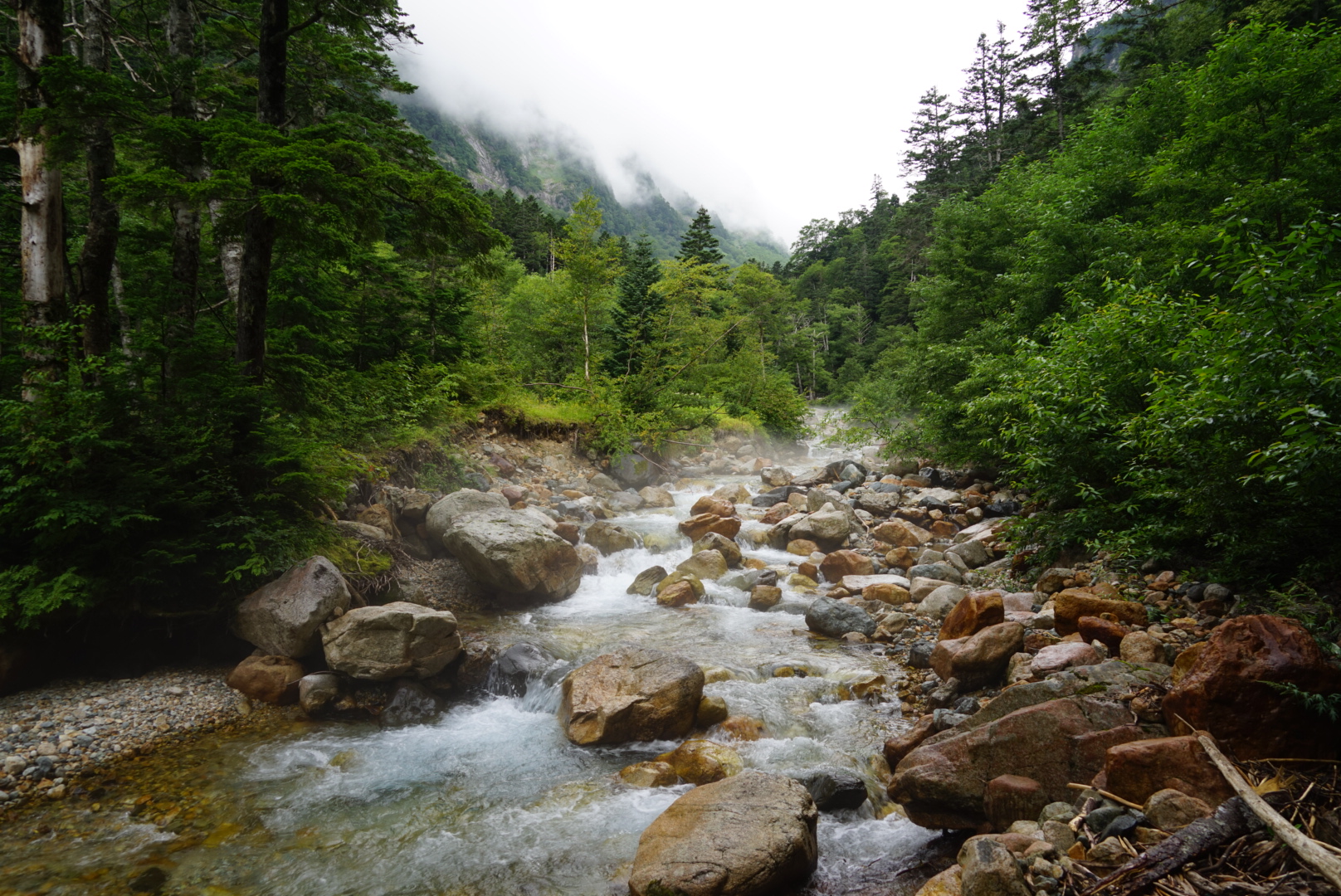



By the early afternoon, I arrived to Kamikochi, a familiar sight. As I made it to camp, the rain ceased and the skies calmed, giving way to the entire range.
Surrounded by hundreds of tourists, most of which only visit Kamikochi to see the range from the comfort of the village, it was hard to appreciate what I was seeing. Nobody knew what I had just gone through. Kamikochi and the North Alps were more to me than just a pretty sight; they were a symbol of struggle, friendship, and accomplishment. I had left a part of me up there, and every time I see it, a vivid story plays back in my head.
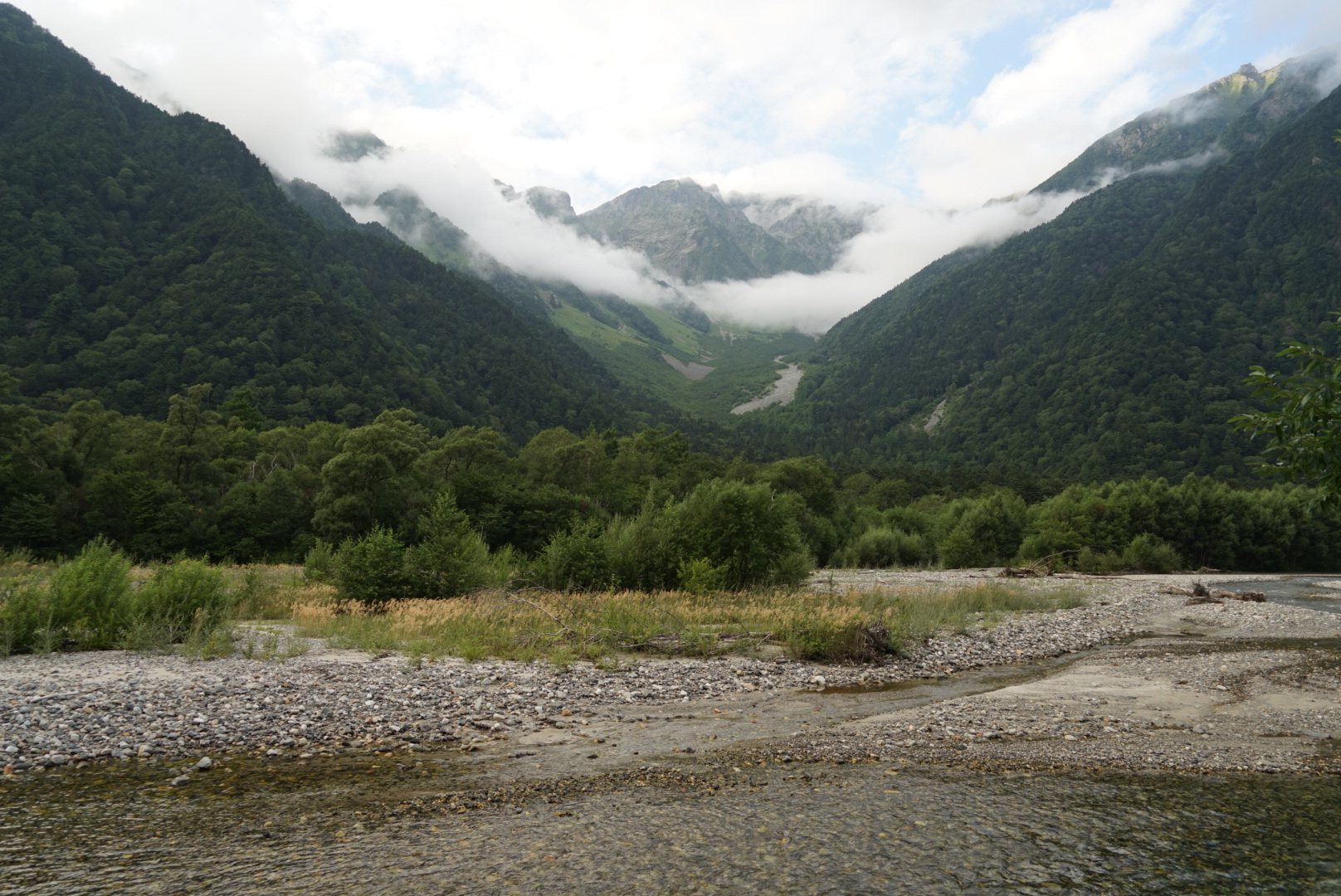
By the evening, most of the day-trippers had already disappeared. They shuttled out of the park by the dozens until there were only a few of us left, those of us with tents.
Just across from me, there was a couple; they were grilling an assortment of vegetables and meats. As I walked by, they waved me over. There was no turning them down because they were right next to me and that would be awkward. Not to mention, I have never denied the opportunity to eat an extra meal!
I asked where they were from.
He was from Nepal and she was from Japan. They had been living together (in Japan) for the last seven years. They were quite possibly the most humble human beings I had ever come across. His smile was inviting and his body language was genuine. You could tell that he was just happy to be there and talking with somebody who was there to truly appreciate the mountains too. She was charismatic and had welcomed my company as if we were old friend who hand’t seen each other in years. I felt comfortable and was happy they had waved me down.
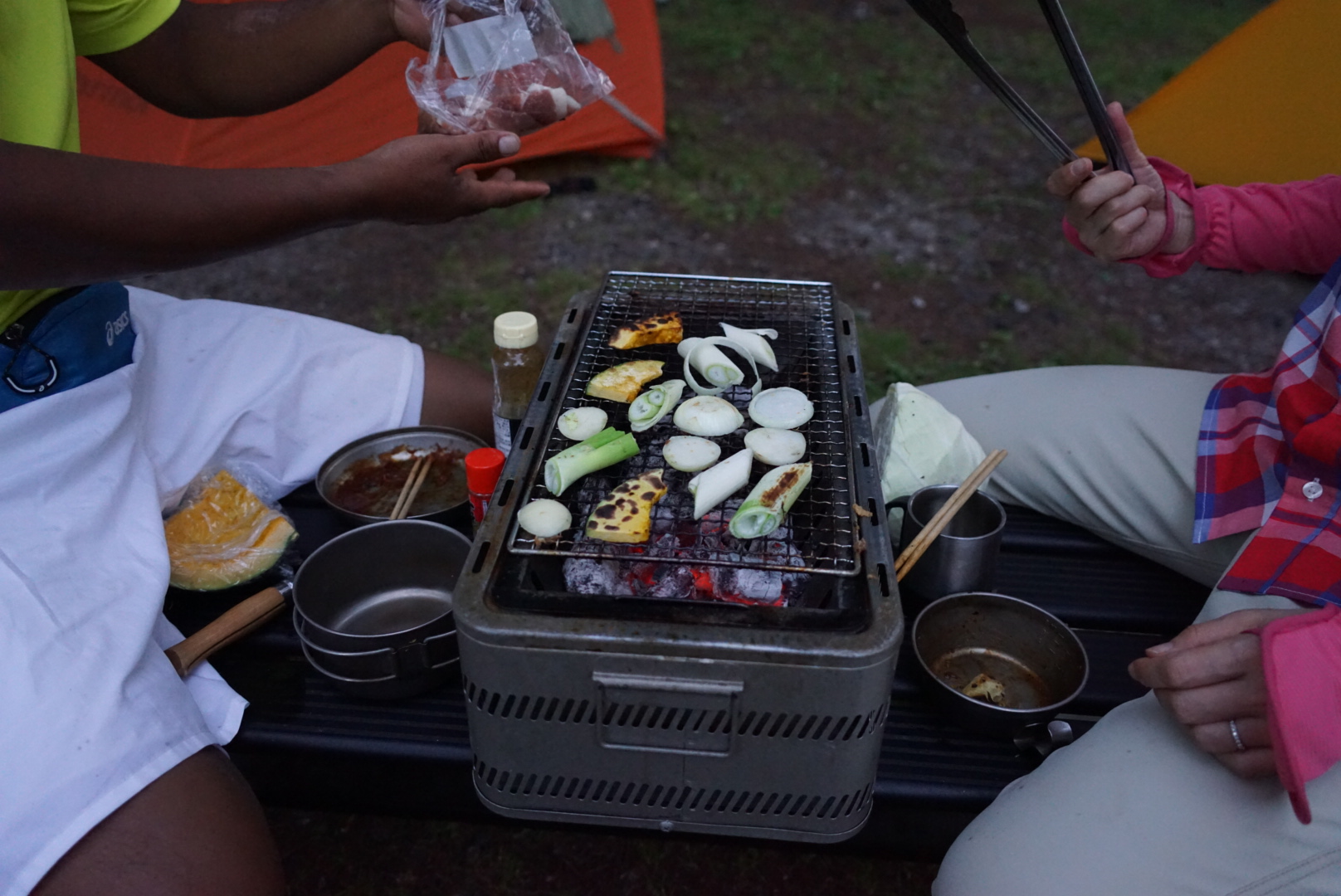

Meiyo (I think that’s how you spell her name; pronounced |me*you|), who didn’t speak much English, but listened with intent and as if she understood me word for word, leaned in over the stove fire as Lama and I shared our past and adventure stories. I connected with Lama instantly. He was seven years older than me but had gone through twice as much. He was from a Sherpa family, back in Nepal, and grew up at an altitude of over 3,000 meters. I was slightly embarrassed for telling him that I had struggled through the range when he told me about how he had a similar walk to and from school every day. Essentially, what took me three full days, he would have to do twice a day just to go to school.
He mentioned that his wife didn’t believe his stories at first. It wasn’t until he had brought her all the way home (to Nepal) to meet his family and see his village that she truly believed him. I didn’t doubt the man for a second, but to see the expression on her face as she nodded in agreement was priceless.
Lama was a down to earth and incredibly genuine person. He had made a great life for himself, as an agriculturist, in Saga, Japan. I wished that my brother was there to join the conversation, as my knowledge on onions and tomatoes were somewhat limited. Beyond that, J.D. would’ve gotten a kick out of the conversation and Lama, too.
Meeting Lama made me want to be a better person. Fuck, it made me a better person! Yet, he wanted nothing from me but to be my friend. He was a man who had come from nothing but self-educated himself enough to figure out how the world worked and how to make a happy life of it. He knew over five languages: Japanese, English, Nepalese, Indian, and Tibetan. But, and most importantly, he knew how to communicate genuinely.
I’m always impressed when somebody can speak a second language fluently, let alone five.

DAY 5, Zero Day
On day five, I took a zero-day (no hiking). Even with the trail behind me, I was still exhausted. My body was broken and needed the rest. Plus, another day would give me the time I needed to dry my gear and organize a new plan.
As expected, the day was uneventful, filled with several naps. That evening, I joined Lama and his wife, Meiyo, beneath the stars, and around their crackling fire.
As we sat and enjoyed the evening, talking about the mountains, another tenter had found his way to our fire. By this point, Meiyo had retired to their tent and it was just the two of us. The third gentlemen came over with his iPhone brightly lit, shining directly into our eyes. His volume was so loud and carried so far that people from down the river could hear him clearly.
He bombarded the conversation saying that he loved talking to people and learning about them. He continued on by gloating about his career and how he was in Japan to manage his employees. He paused for a moment, reading our body language, and said, “Am I bothering you guys? If so, no problem, I can leave. If I’m bothering you guys, I can leave.”
Lama and I looked at each other, then back to the third fellow and said, “not at all.” The truth of the matter was that we were both being respectful and both understood that he most likely wasn’t aware of how rude he was being. He continued blabbing on and occasionally stopped to let out a loud burp (something that was common in his culture and not considered to be rude). Although he too was being his genuine self, he did not mesh well with our conversation. In fact, he completely contradicted himself when he said he loved to getting to know other people. If he would’ve taken a moment to listen, instead of talking a mile a minute, he would have gathered that our conversation was on an entirely different level and that we enjoyed the calm surrounding of nature. His friends got the message before he did and quickly called him over. The difference between them was striking, yet outstanding. One had come from money, and the other had come from nothing. Humility is something you can’t fake, it surrounds you and shapes the person you are.
DAY 6, Goodbye, Again, Again, Again.
The following morning, I went to Lama’s tent to say a final goodbye. It was a moment that struck me deeply. The genuine look of sorrow on his face, as he crawled out of his tent to wish me luck and say goodbye will stay with me forever. The smile on his face, for the short time we had shared, was the most humbling experience I have ever had. I threw out my hand for a handshake, but he stood tall to give me a hug. The world could use more people like Lama and Meiyo. That’s just the fact of it. Honestly, I didn’t think about writing this story, but meeting Lama compelled me to put this experience into words, and I’m glad I did, even if it’s just for me.





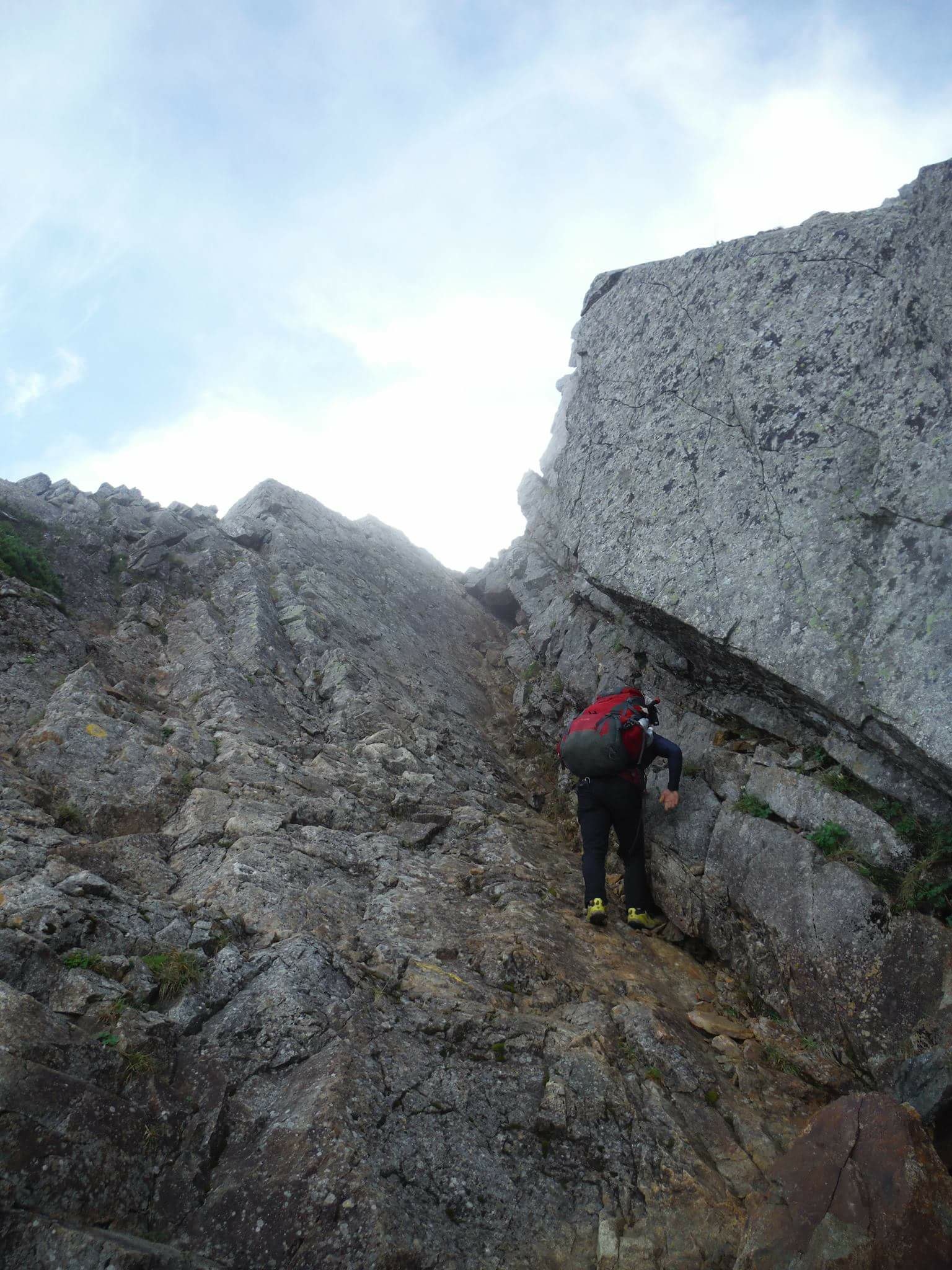





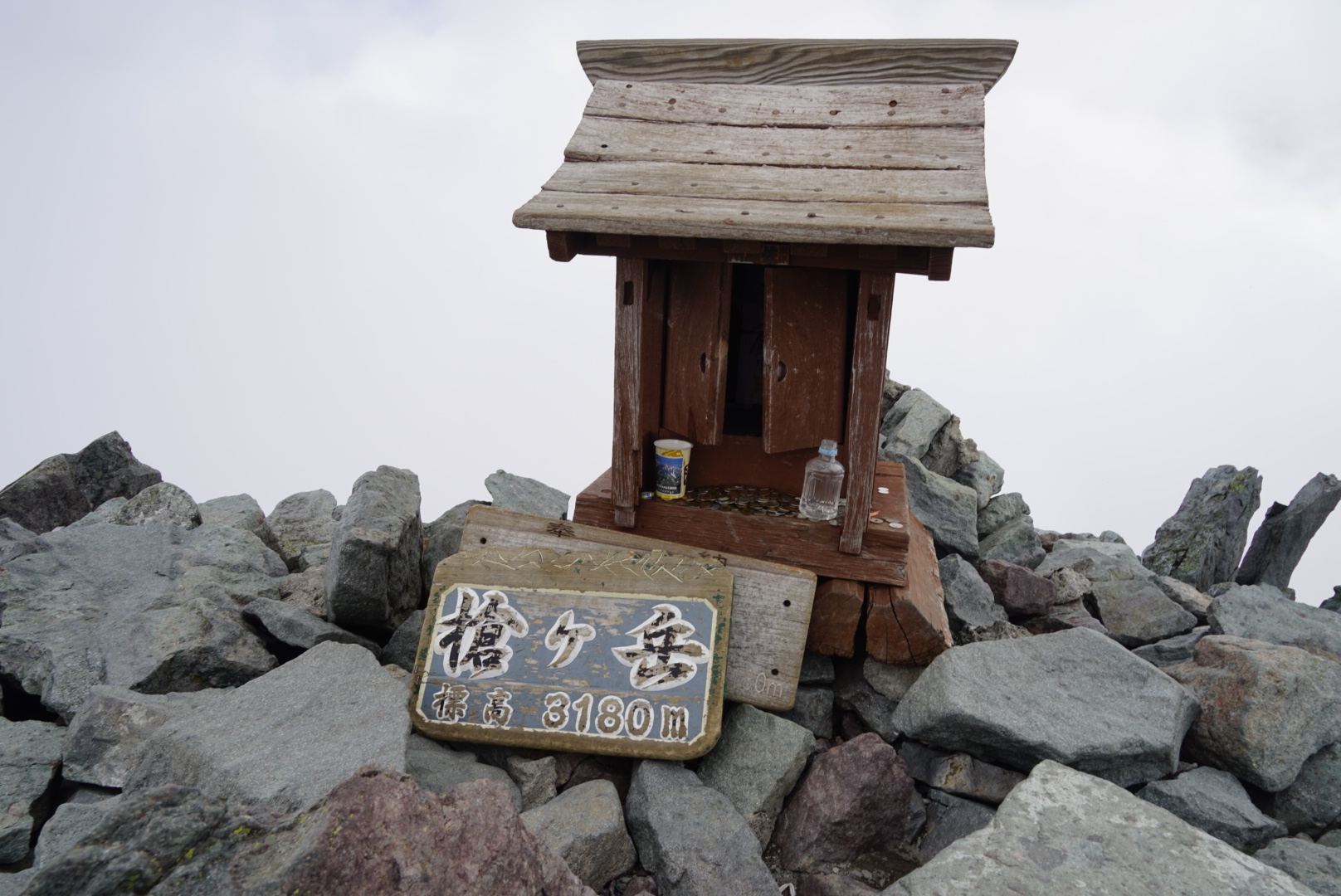




The more I thought about it, the more I realized I needed to put this experience into words.
DAY 1
I started my journey across Japan’s northern alps in the remote village of Kamikochi. Kamikochi wasn’t accessible by private car: being one of Japan’s national heritage sites, it remains decently preserved. The only way to reach the entrance was by a hired car (taxi) or bus.
I just so happened to be with a friend I had met in the Philippines months back. As things go, we were in the same place at the same time, making it too easy not to reconnect and explore this peculiar land together. Moreover, he was traveling Japan in style…with a minivan. I met him at Tokyo’s airport where we picked up the van. We named it Serena…because why not? After nearly a week of sleeping on foam mats in the back of Serena, driving on forgotten country roads to avoid outrageous tolls, and exploring the hard-to-reach areas throughout central Japan, our time to part ways again was close. The world seemed to be getting smaller and smaller, and I was positive that our paths would eventually cross again.




With the short shuttle bus ride from the parking terminal to the entrance out of the way, we were officially in Kamikochi, and with plenty of daylight to spare too. Segev headed for the campsite, while I remained at the information center, preparing for what I thought would be an easy few days of hiking. The plan was for Seg and I to part ways as soon as his tent was set up. I would then begin my journey north to the village of Omachi, easily a one week’s journey away.
Packable food options were limited, leaving me with no choice but to load up on fresh, perishable, food: food that probably wouldn’t last the day. I grabbed what I could fit in my already cumbersome and bulging pack and made my way toward the campsite in search of Seg.

To celebrate our parting, Seg brought out the last bit of his Israeli coffee he had left with him. It was coffee found only in Israel, and he managed to bring enough to last his entire nine-month journey across Asia. After downing two cups of Israel’s finest mud coffee, I threw my pack over my shoulder and bid farewell to yet another friend I had made on my journey across the world. The weather was nearly perfect, and I had beams of sunlight shining through the forest’s canopy to lead my way. The first five kilometers went by just as I had expected, moderately steep elevation through a vibrant forest. I kept a strong and steady pace through the woods; I was hoping to reach my first campsite before dusk. Back at the trailhead, I had mapped out my first day to be around 16 kilometers with a roughly 2,000-meter climb. An easy day, I had ignorantly thought to myself.

By the time I reached treeline, the weather had already begun to shift. Ominous clouds pushed across the sky, settling in over the range, consuming everything in their path. Not exactly what you want to see when you plan to spend over a week in the mountains. It wasn’t long before everything in front of me was completely engulfed. I figured it was only a matter of time until there was no blue left to be seen. I had seen this happen a thousand times, and what laid in front of me painted a grim story for the next few days. And although weather in the Alps is unpredictable and ever-changing, a typhoon was heading for Japan, almost guaranteeing abysmal weather.
I pressed on, arriving at my first checkpoint by the late afternoon. It was a small mountain lodge, but they had running water and food for sale. It was also an official tent site with dozens of tents already set up. I refilled my water stores and restocked my pack with any food they had available. I hadn’t hiked far but the elevation was no small feat. From the trailhead, I had already gained about 1,200 vertical meters. I was feeling fairly decent but knew that the next bit of trail would be twice as laborious. Looking out at the terrain, I could see rock-bedded trails, disappearing up and into the fog. I remember thinking to myself how hard it was going to be, but that I’d be relaxing at the campsite with my feet up before sunset.
The day grew shorter and shorter as I reached my first peak, Nihiho-doppyo Dake where there were already a few hikers moving about. I joined the small crew in taking the glorious “summit photos.”

At the summit, I met a small group of Japanese people who spoke English well. Hoping for some comradery, I asked if they were heading for Okuhotaka Dake, the range’s highest peak and Japan’s third tallest mountain, too. They laughed and said no way. That’s too hard. I was a bit confused, it wasn’t that much higher from where we stood and it was less than five kilometers of trail away. Why come all this way, I couldn’t help but think.
I was ahead of schedule, affording me a generous break. I wanted enough energy to take on the next twelve peaks between me and my campsite without any issues. I remained overly-confident, but could feel my left knee starting to ache. It could have been from the initial and steep ascent or the chilling air that rushed up over the ridgeline: most likely a combination of both. My knee had been acting up more and more over the past few years, but I was hoping more than anything that it would just remain an ache and go away. Although I tried my best to ignore it, I knew that the small ache was a precursor to something bigger, and that if I wasn’t careful, I could end up in a lot of trouble.
I set my mind straight and threw my pack over my shoulders. I was roughly 850 meters from my next summit, with a 235-meter vertical gain. I thought nothing of the difficulty and continued at a strong pace. I was eager to get to my campsite and call it a day. Other than the increasingly alarming ache in my knee, there was something else that struck me as off. I hadn’t seen another hiker since I left my first peak. It wasn’t terribly late or anything, and it was dead smack in the middle of Japan’s most popular vacation season. One thing I came to find about the Japanese is that they are very active and frequent their own trails quite a bit. Up to this point, the majority of hikers I met while hiking in Japan were Japanese. I liked that about this country. These trails should’ve been crawling with people based on how busy the first lodge was. The thought passed, and I continued traversing the rocky ridge.
By peak three, it finally dawned on me as to why nobody else was on the trail: for one, fog had completely consumed it; for two; it was incredibly dangerous and arduous; and, for three, the altitude made the air hard to breathe. I could feel myself wearing down by the minute. With the six liters of water I had strapped in, my pack weighed over 27 kilograms (60lbs), and my left knee was all but finished. I was in good spirits but was nearing total exhaustion. The trail tested me mentally and physically and challenged my every step. The jagged and rocky trail was like a never-ending nightmare. It led you up 100 vertical and demanding meters before dropping you the same 100 time and time again. Hovering around 3,000 meters (10,000 ft) above sea, the altitude began eroding my spirits.


It had been hours since my last encounter with the group from summit one. Doubt filled my head as to whether or not this trail was actually open or safe. But, then, out of the fog and heading my direction, appeared a small group of hikers, maybe two or three total. I was relieved at the sight, but they were taken aback.
Curious, and speaking for the group, the middle-aged woman asked why I was heading in my current direction and so late in the day, at that. I casually told her that I was in route to the Yarigatake campsite and expected to be there before dark. They were Japanese, and when I mentioned Yari, they all wore a succinct look of confusion.
Looking down at her watch, she looked back at me and said, “Yarigatake is 20 hours by trail from here. There is no way you’ll make it there by tonight. You’d be lucky even to make it to the next campsite by dark.”
I looked at her and with a small grin said, “I’m a pretty fast hiker; I can make it.”
Based on the distance I needed to go and how fast I was moving, the math worked out.
Confident Idiot, she must’ve thought. But, in the polite fashion of Japanese people, she simply shrugged her shoulders and wished me luck. The other two followed, giving a respectful half bow. It was apparent that they didn’t speak English. I imagine they laughed too when she told them I was looking to make it to Yarigatake before dark.
I began to question my plan. Either she knew something I didn’t, or she and her group were slow hikers. After all, Yarigatake’s campsite was only 8.5 kilometers from my current position. I figured it would take me no more than three hours to reach.
I pushed on, but more and more doubt filled my head with each step forward. I wasn’t worried about hiking in the night, but these trails were steep and often precarious. It wouldn’t be a great idea to chance.
After hearing the concern in her voice and seeing the absolute difficulty of the trail, I began to wonder if I would even make it to my 7th peak, the tallest in the range, let alone my campsite by sunset. It was the first time in a long time that my ability came into question. It felt like I was making great time and chipping away at this trail, but the reality was, it was chipping away at me.

By my 5th peak, I was ready to call it quits. My left knee was completely shot and my heart was pounding through my chest. The back-to-back 100-meter climbs had officially taken their toll. I sat on the 5th summit wondering what my next move was, if anything. There was no doubt that Yari’s campsite was out of the question. Looking down at my map, even reaching Okuhotaka Dake’s campsite was questionable.
It was only a matter of time before the sun fell behind the mountains, eliminating the little light I had left. I had been hiking through the fog for over four hours and hadn’t seen a man-made structure since leaving the first lodge. My breath was heavy and the temperature was slowly dropping.
After an internal struggle, I decided it would be best to set up camp for the evening. There was no way I was going to reach the next official campsite, not with Okuhotaka Dake in the way and definitely not in the dark with how exhausted I felt.
I began my descent down the 5th peak, surveying the rocks for a relatively flat area. At the gully, I found a flat rock ledge: it was almost too perfect. And while I couldn’t see beyond it, I threw down my pack and began setting up camp. In the nick of time, too. Rain was quick to follow.

DAY 2
It was just before six o’clock in the morning. I wasn’t completely sure, but I thought I could make out the shape of a person, scrambling down the rock trail and in my direction. I was camping where I wasn’t supposed to, and although I was pretty far far from the actual path, I didn’t want to chance being fined 100,000 yen.
I began packing up my tent immediately. As he approached, I gathered the rest of my supplies and kicked back on a large rock, as to appear composed and like I hadn’t just spent the night. As he passed, he stopped and looked at me with great surprise. The feeling was mutual.
The best he could, he asked if I had just camped there. I looked at him and said, “No way, man! I’m just taking a break.” I wasn’t sure if I could trust telling him the truth. It was odd to see somebody this early in the morning, especially considering that I was in the middle of a mountain range and hadn’t seen a soul on this trail heading north since I started. I thought maybe he worked for the lodge and was just doing a trail sweep.
His name was Youto, and his English was anything but abundant. He could understand me perfectly well but speaking it back was a bit of a struggle. I gave him a half bow, shouldered my pack, and set out on the trail in front of him, thinking that I would never see him again.
He remained on my tail, keeping my pace with ease. I thought to myself it probably wouldn’t last. I was the fastest hiker I knew at the time. Not because I had something to prove, I just hiked a lot. An hour later and a lot of distance between me and where I made camp, I noticed that Youto wasn’t fading, not even in the least. In fact, he was keeping a strong enough pace to pass me, so I let him do just that.




We exchanged the lead several times as we traversed the range’s piercing spine. The fog limited our visibility, and I often felt like we were going in circles. As we inched on, small sections of the trail became visible to us and the trail behind slowly disappeared back into the fog. Okuhotaka Dake sat only a few kilometers in front of us, yet we couldn’t see it.



I had intended on reaching Yarigatake by the evening, but settled on making camp at Okuhotaka’s campsite, where Youto was heading, instead. From where we had initially started, the campsite was less than two kilometers away, but it was two kilometers over loose, steep, and jagged rocks. Every 150 horizontal meters took as long as 1 kilometer. We climbed for hours up and down the rocks, using only chains and protruding boulders as secure holds. The possibility of falling was very real, but just as thrilling. Judging my Youto’s climbing helmet, he wasn’t taking any chances. There were no safety guidelines or restrictions. It was you and the trail at your own risk (I later came to find that many people die on this range and that you need to submit forms in advance to hike the Alps…whoops!).
After a long and grueling morning, we reached the summit of Okuhotaka together. There wasn’t much time for embellishing our feat, though, the weather was slipping deeper and deeper into a dismal state. The summit was cold, windy, and covered in a thick fog. Within seconds of taking my camera out, the lens and body were coated in a thin layer of moisture.
There were a few other Japanese fellows occupying the summit by the time we got there. They had hiked up from the campsite, the campsite we so looked forward to reaching. It sat just over the ridge on the saddle. Their English was above par, and they had even visited Philadelphia, my home city.

After a brief stay and a few summit pictures, Youto and I set off for the campsite. We made it to the lodge in no time, as it was all downhill and not nearly as rigid as it was on the way up. The mist lingered on and was so thick that it was like walking through sheets water. I was never so happy to see a man made structure before. The lodge was warm and cozy with a gas stove in the middle of the room. We were wet and cold and would’ve traded our last dollar to get inside. Luckily, we didn’t have to.

Compared to where we just came from, the place was crawling with hikers. As the afternoon went on, dripping wet hikers filed into the lodge one by one, all coming from different directions of the trail, but none from where Youto and I came from. The short section of trail we had traversed was some of the most dangerous terrain in the entire range; the other dangerous section laid just beyond our campsite.
We took shelter inside the lodge until the heaviest part of the storm passed. At the first opportunity, we ran out to set up our tents. The campsite was astounding, carved out of Karasawa zan, another gargantuan mountain adjacent from Okuhotaka zan. Youto and I set up camp on the two highest rock platforms that overlooked the valley. We didn’t know it at the time, but our view was unbeatable. The rain continued to pour, leaving us with little to do with the rest of our day and no view.
Exhausted, Youto retired to his tent and remained there for the better part of the day. I stayed in the lodge, drying my clothes and pack next to the stove. Among a sea of Japanese, I was the only foreigner in sight. They came in waves, flooding the common area, leaving their mark of wet footprints and dripping coats. Most weren’t as fortunate as Youto and I; we had made it to the lodge before the worst of the storm hit.

When the rain ceased, I made my way back up to my tent so I could organize my things and lay out my sleeping bag. That’s when I saw it, the entire Alp range!


I hadn’t seen anything for the past two days, so when the clouds finally cleared, time stood still. Without hesitation, I ran back to the lodge to grab my rain jacket and day pack. Karasawa Dake was only a 100-vertical-meter climb away, and I wasn’t sure if I would get the opportunity to see the range again, especially from above 3,000 meters. On my way out of the lodge, I saw Youto running down from the campsite, pointing at the summit. It didn’t take an expert to understand what he meant. I held up my rain jacket and said, “Let’s move!” We were on the same page since the start and shared the same excitement to see the Alps from an incredible vantage point, the summit of Karasawa Dake. We raced up the mountain and, as we ascended, the grim weather pushed further and further away, until it was almost completely out of sight. The view from the summit made every painstaking step worthwhile.


I hadn’t seen a place like it since New Zealand or Chile. We were the first ones to take advantage of the clearing and within the hour could see several other hikers making their way up the mountain’s rigid path. The weather improved by the minute, giving way to more and more of the range. It was like a dark spell had been lifted. The bright blue skies had prevailed. We hung out at the summit for a few hours before descending back to the campsite and warmth of the lodge. Initially, the poor weather made me question my journey, but seeing the weather open up gave me the hope and motivation I needed to press on.
As the afternoon faded and the evening drew closer, the weather began to shift for the worst. I had hoped to return to the summit for sunset, but after stepping back outside, I soon realized that the idea of another summit was a fading possibility. Dark gray clouds returned, eating up the day’s remaining sunlight. I decided it was best to kick back and enjoy a highly marked up bottle whiskey I had purchased earlier from the lodge.

As I sat, enjoying my expensive cheap whiskey, killing the last bit of brain cells the elevation had missed, I turned my head as if to appreciate the color gray one last time. “Son of a bitch,” I whispered from under my breath. The weather had turned again, with pockets of pale blue skies emerging once more.
I ran for the door, turning back to grab the last bit of whiskey I had left on the table. As I made my way out the door, I saw Youto running down from the campsite, heading my way. Just like before, he was pointing at the summit, yelling in Japanese.
We were still on the same page, only this time, I had whiskey in my blood. It didn’t matter because catching the sunset over the North Alps was something I had been looking forward to since the start of my journey. The ascent was a struggle, not because I was slightly intoxicated…okay maybe because of that. It took me longer than usual, but, eventually, I made it and just in the nick of time, too! The sun was perched just above the horizon, ready to fall below the few remaining clouds.

The view was breathtaking: or maybe that was from the altitude. We were both surprised to see only one other person. We kicked back on the summit long after the sun fell beyond the horizon and until the stars began to appear a few hundred at a time. Just as the sun fell, a nearly full moon rose directly from the east, giving off a cold glow on the mountains. I could hear myself saying “wow” over and over again. I was also pretty intoxicated, so, really, anything would’ve “wowed” me.









After a few hours and being the only two goons at the summit, we began our descent back down to our tents. It was a day for the books, and we had both seen and accomplished so much. We had only known each other for several hours but had been on the same page since the beginning. It was another bittersweet goodbye but a goodbye nonetheless. He planned to set off by 04:00, while I didn’t plan on waking up until after 05:00.
DAY 3
I wasn’t sure of the time, but I figured it was around 04:00 because I could hear Youto packing up his tent. I rolled over and fell back asleep for another twenty minutes. Somewhere along my dreaming process, I realized that the sunrise from Karasawa Dake would be something to witness. I immediately slid out of my sleeping bag and began packing up. I was motivated to be ready to move out before sunrise. It was a short climb, but after summiting Karasawa zan twice, I knew it was strenuous and exhausting, especially with a 27-kilo pack weighing me down. Eager to catch the sunrise, I wasted no time with the details of organizing my pack. By 05:00 I began my ascent and by 05:15 I had summited Karasawa zan for the third time. There wasn’t a cloud in sight, and I could see for kilometers over the Alps.


I had a long journey to Yarigatake, so I started on my trek shortly after the sun lit up my path. Several other hikers had told me that the next part of the trail was extremely dangerous and quite steep, and after being on the trail for two days, I had no doubt in what they had said. Looking down from Karasawa Dake, I knew I was in for one hell of a day. The path was vertical, and I could see the dangling chains and ladders bolted to the stone. Nevertheless, I wasn’t discouraged, rather, pretty excited. I love a trail that offers challenges and excitement. Something about the possibility of death makes the journey that much more exciting. It may sound like I’m exaggerating, but I assure you that one wrong step would’ve ended fatally.

As I descended from Karasawa Dake, I could feel my hands beginning to cramp. The amount of weight I was carrying combined with the steepness of the trail was putting a lot of strain on my arms and hands. Not to mention, I was gripping each stone for dear life. By 07:30 I had made it the valley floor and out of danger’s path. The air was thin, and I often found myself gasping for air, even though I wasn’t on an elevated path. And although I was on the valley floor, I was still sitting close to 3,000 meters above sea level.

The ridgeline was a nice break, but it was only a matter of time before I had to start climbing again. My next peak was Kitahotaka Dake, sitting over 3,100 meters high. Thankfully, it wasn’t as steep of a climb as my descent from Karasawa Dake, and there were a lot more crevices to rest. I took my time climbing, as the last several days had compounded on my body, making it difficult to keep at my usual pace. I had a growing headache, due to the lack of water and sleep. The only thing keeping me going was the strength of my legs. The weather was the clearest it had been since the start of my journey and kept me motivated throughout the climb.


Unfortunately, the clear weather did not last, and as soon as I made it over Kitahotaka Dake, I could see the storm clouds moving in from behind. I knew my time was limited, so I picked up my pace in an attempt to make it to my next campsite before the rain. After summiting Kitahotaka, the rest of my journey was like a walk in the woods.







The path was clearly visible with only minor elevation. I tackled my next three peaks with ease and made it to the Yarigatake campsite by noon. I was completely exhausted, and as soon as my tent was set up, I crawled in and fell asleep. I didn’t bother with registration, even though I was sure it would come back to bite me in the ass. At the moment, I was too tired to deal with the process and would handle the situation as it arose. And just like I thought, I was woken up by a Japanese guy, waving a wooden plank with the number 14 inscribed on it. I figured I was in his spot. Thankfully, he was kind enough to swap sites with me, after I got registered, instead of making me break down my tent and move.

By that point, I was wide awake. My head was pounding, but the idea of sitting still wasn’t happening. The base of Yarigatake sat only a few meters in front of me and, although it was covered in a thick haze, I couldn’t help myself. I moseyed closer and closer repeating to myself that I needed to rest and that climbing Yarigatake was not a good idea. But it was too late; I had already started to make my way up the mountain. It was a very short, but steep climb to the summit. I told myself that I would just take it extremely slow and that if my head began to pound too hard, I would turn back and wait until I was fully rested.
The words I mumbled to myself were nothing more than empty promises and worries. I knew I wouldn’t listen to myself, and by the time I made it to the summit, my head was on fire. The clouds had settled over the peak and left nothing visible. Thankfully, I didn’t expect much, as I couldn’t see two meters in front of me. Honestly, I just wanted the satisfaction of taking on Japan’s fifth tallest peak, along with my already accomplished third. In spite of my lack of view, I remained on the summit for hours. In the event that the clouds did clear, I wanted a first class ticket to see the Alp range. Unfortunately, the only thing I saw was fast-moving clouds, rushing over the peak. I hadn’t expected to see anything leaving me content with my decision to climb Yarigatake. I took the rest of the evening to rest up and figure out a plan for day four.
DAY 4
I woke up to heavy winds and settled clouds. I knew there would be no getting around the rain this day. I did my best to dry my things, but the air inside of the lodge was too cool and damp. I would have to settle with a wet pack for my long trek. I set off around 09:30, heading for my next campsite on the ridgeline. I had to make due without my GPS, as the rain was relentless and plenty. Even if I wanted to use my phone, my fingers were too wet to navigate through the map. Sliding my phone to open was futile and frustrating. Instead, I was inclined to give my best shot at following the Japanese trail signs.

I knew the general direction I wanted to go but there were a network of trails that intertwine, and if I accidentally merged onto the wrong trail, I would be heading in a different direction altogether. As it turns out, I did just that. I should’ve known better when my elevation was dropping rapidly. I was too focused on my steps, and the rain was too heavy to pull out my phone to check. It wasn’t until I saw a sign for Kamikochi that I knew I had taken the wrong path.
I was slightly frustrated but didn’t have a problem with the minor change in plans. I decided I would make camp where I had started my journey and take a few days to regain my strength and make a new plan. It was a long way to Kamikochi, but it was the nicest bit of trail I had seen for some time. The trail was completely flat and followed the river the entire way. It was the first time I had walked on flat grounds in a while.





By 13:30, I had arrived back at Kamikochi and the weather was back to normal. The blue skies emerged once more, and the peaks had become visible. The only bummer was that I was surrounded by hundreds of tourists who visit the village just to see the range, not hike it. Nobody knew what I had gone through over the past four days, but me. Kamikochi and the Alp range were more to me than just a pretty sight; they were a symbol of my small accomplishment and struggle I had gone through. I had left a part of me in that range and every time I stared up at the ridgeline, a vivid story played back in my head.

That evening, I ran into a couple who were grilling an assortment of vegetables and meats. As I walked by them, they waved me over and asked me to join them. There was no turning them down because my tent was right next to theirs. Not to mention, I have never denied the opportunity to eat a free meal! I asked where they were from, thinking they were both from Japan but, as it turned out, the man was from Nepal, and his wife was from Japan. He has been living in Japan with her for the last seven years, and his story was absolutely incredible. He was possibly one of the most humble human beings I had ever come in contact with, in addition, his smile and body language were warming and genuine.


His wife, Meiyou (I could have very well destroyed the spelling of her name…it is pronounced |me*you|,) didn’t speak much English, but listened with intent, as Lama and I shared our past and stories. I connected right away with Lama, as we shared the same values and interests. He was seven years older than me but had gone through twice as much. He was from a Sherpa family, back in Nepal, and grew up over 3,000 meters above sea level. I was slightly embarrassed for telling him that I had struggled through the range after he had told me about how he had a similar walk to that to get to and from school every day. Essentially, what took me four days, he would have to do twice a day just to go to school. He mentioned that his wife didn’t believe his stories at first until he brought her to Nepal to meet his family and see his village. I didn’t doubt the man for a second, but to see the expression on his wife’s face, when she agreed with him, was priceless. Lama was a down to earth and very genuine person. He made a great life for himself, as an agriculturist, in Saga, Japan. I kind of wished that my brother was there to join the conversation, as my knowledge on onions and tomatoes were somewhat limited. Meeting Lama made me want to be a better person, and he wanted nothing from me but to be my friend. He was a man who had come from nothing but self-educated himself enough to excel in this world. He knew over five languages; Japanese, English, Nepalese, Indian, and Tibetan, and most importantly, how to communicate genuinely. I am always impressed when somebody can speak a second language fluently, let alone four, especially without a proper education system.

DAY 5
The following day, I took a zero-day to relax, dry my gear, and organize a new plan. The day was uneventful and filled with several naps. That evening, I joined Lama and his wife, beneath the stars, around a crackling fire. As we sat and enjoyed the evening, talking about random things, another fellow camper decided to come over and join us. At this point, Lama’s wife had retired to their tent and it was just the two of us. The third gentlemen, from India, came over with his iPhone brightly lit, shining directly into our eyes. The volume of his voice was so loud that people from down the river could hear him. He bombarded the conversation saying that he loved talking to people and learning about them. He continued on by gloating about his career and how he was in Japan to manage his employees. He paused for a moment, reading our body language, and said: “am I bothering you guys? If so, no problem, I can leave. If I’m bothering you guys, I can leave.” Lama and I looked at each other, then back to the third fellow to say: “not at all.” The truth of the matter was that we were both being respectful, and both understood the culture he was coming from, and that he most likely wasn’t aware of how rude he was being. He continued blabbing on and occasionally stopped to let out a loud burp (something that was common in his culture and not considered to be rude). Although he too was being his genuine self, he did not mesh well with our conversation. In fact, he completely contradicted himself when he said he loved to getting to know other people. If he would’ve taken a moment to listen, instead of talking a mile a minute, he would have gathered that our conversation was on an entirely different level and that we enjoyed the calm surroundings of nature. His friends got the message before he did and quickly called him over. The difference between them was striking, yet outstanding. One had come from money, and the other had come from nothing. Humility is something you can’t fake, it surrounds you and shapes the person you are.
DAY 6
The following morning, I went to Lama’s tent to say goodbye. It was a moment that struck me deeply. The genuine look on his face, as he crawled out of his tent to wish me luck and say goodbye will forever linger with me. The smile on the man’s face, for the short time we shared, was the most humbling experience I have ever had. I threw out my hand for a handshake, but he stood tall to give me a hug. The world could use more people like Lama and his wife. That’s just the fact of it. Honestly, I didn’t think about writing this story, but meeting Lama compelled me to put this experience into words.


































Sam, I am so very glad you were inspired to share your experience. I truly hope you continue to share your stories. You took me from cringing to tears. I am proud of you son.
LikeLiked by 1 person